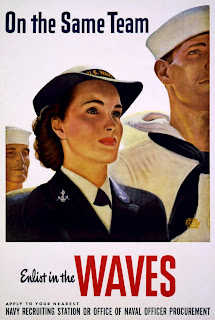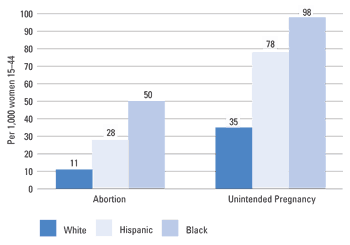According to an article posted on msmagazine.com called Things American Women Could Not Do Before the 1970s it
states a lot of interesting things women were not allowed to do before the
1970's. After the 1970's America's social attitudes changed about women. It was
a turning point in American history and each year I feel we are working toward
woman rights and equality in social situations.
1. Keep her job
if she was pregnant.
Until the Pregnancy
Discrimination Act in 1978, women could be fired from their
workplace for being pregnant.
2. Report cases
of sexual harassment in the workplace.
The first time that a
court recognized sexual harassment in the workplace was in 1977 and it wasn’t until 1980 that
sexual harassment was officially defined by the Equal Employment Opportunity Commission.
3. Be acknowledged in
the Boston Marathon.
Women could not don
their running shoes until 1972!
4. Get a credit
card.
Until the Equal Credit Opportunity Act in 1974,
women were not able to apply for credit. In 1975, the first women’s bank was opened.
5. Refuse to
have sex with her husband.
The mid 70s saw most
states recognize marital rape and in 1993 it became criminalized in all 50 states.
Nevertheless, marital rape is still often treated differently to other forms of
rape in some states even today.
6. Compete as a
boxer in the Olympics.
It wasn’t until the
2012 London Olympics that women could compete in boxing in the Olympics. This
was marked with the amazing victory by Britain’s Nicola Adams.
7. Get a divorce
with some degree of ease.
Before the No Fault Divorce law in 1969, spouses had
to show the faults of the other party, such as adultery, and could easily be
overturned by recrimination.
8. Celebrate
International Women’s Day.
In 1980 President
Carter declared one week in March to be National
Women’s History Week, including International Women’s Day on March 8th.
9. Have a legal
abortion in most states.
The Roe
v. Wade case in 1973 protected a woman’s right to abortion until
viability
In the
article What Are Women's Rights by Jone Johnson Lewis there is a list of
women's right that stand today. here they are:
Summary:
what is included in "women's rights"?
Generally, then, claims about women's rights can be classified into several general categories, with some specific rights applying to several categories:
Economic rights, including:
- right to own and dispose of property
- right to inherit property in her own name and
control it; right to designate who will inherit her property
- right to her own wages and income
- equality of survivor's rights upon death of a
spouse (e.g. how much property one inherits, whether one has a right to
continuation of a spouse's pension benefits)
- access to jobs, trades, professions
- equality of treatment within jobs, trades and
professions, including promotions
- equal pay for equal work, equal pay for work of equal value (comparable
worth)
- access to credit in her own name
- equal participation in labor
unions
- right to job protection when taking maternity
leave
Civil rights, including:
- legal and contract rights
- equality of citizenship (treated as a full
adult, equal to males, rather than as a minor, a slave, or a legal
non-entity)
- general equality
of rights under the law
- ability to sue in court, to represent one's self
- be a witness in court
- serve on juries
- serve as an attorney
- marriage, divorce and
parenthood rights
- married women's legal existence separate
from her husband
- marriage rights, including consent to marriage
and equal rights and responsibilities within marriage
- keeping her own name after marriage
- equality of rights in determining where to live
- divorce rights, including equal ability to
initiate divorce and rights to child custody and property division on the
same basis as men
- right to equal guardianship of children during
marriage
- right to child custody after divorce or
widowhood
- basic civil freedoms
- free speech
- freedom of religion
- freedom to change nationality
Social and cultural rights, including
- control over her own person
- education - both basic and higher education
- equal access to both basic and higher education
- equal access to educational programs, including
sports
- professions open to women, including law, medicine,
teaching, theology
- roles in religious
institutions, including voice, participation, serving as clergy
- treatment within the military: roles, promotion,
treatment
- moral codes: absence of the "double
standard"
- choices regarding roles and responsibilities
within the home
- choices regarding roles and responsibilities
regarding children
- sexual choices, including sex outside of marriage
- choice regarding family size and reproduction,
and methods of controlling: contraceptives, abortion
- safety from sexual mistreatment, including rape, traffic in women, and
exploitation of prostitutes
- choice of dress
Political rights, including
- participation in the political sphere, including
having a voice and influence
- voting
- running for and serving in political offices
- inheriting titles and ruler ship in her own name
Reflecting on
women's rights in my life, I have never felt like I wasn't an equal. I have yet
to be in a situation where I feel I did not have rights or the same rights as a
man. I anticipate that later on in my life I will deal with a situation where I
am not equal to a man perhaps in a job or out in the community. I feel as though society has come a long way
from the early 1980's but still has room for improvement. I have a lot of traditional
outlooks on life and the role in society for women. I grew up in a very
traditional household with a stay at home mother and a hard working father. My
mother stayed at home while my dad provide for the family. In my opinion that
is how it should be, but for laws and regulations restricting women from
working if they want to is crazy. I feel as though women who want to work and
have an equal role in society as men they should be entitled to the same rights
as men. No law should keep them from doing what they want. Regardless of my
outlook and opinion I don’t think there should be laws in place to prohibit
women from doing what they want. Looking at the history of women through the
time of this history course, I have become much more open minded with things.
It made me look at different double standards I hold in my mind. I feel that I have
grown into a critical thinker. It has allowed me to look past my personal
opinions whether it be socially, culturally, or religiously and look at it with
other points of views regarding abortion, women's rights, and the social and
cultural status of women.

















